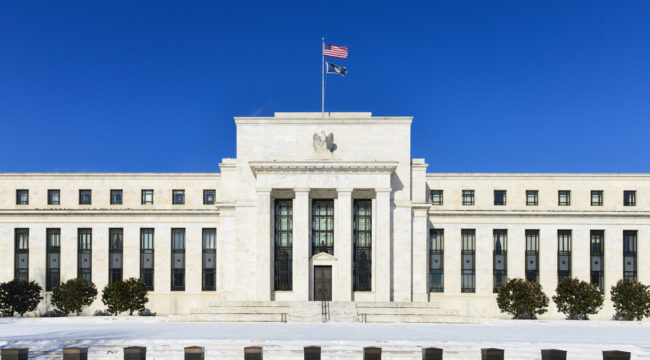REVEALED: The Date of the “Big Credit-quake”
The old signposts can no longer be trusted, we noted in Friday’s reckoning.
Like Nazi saboteurs redirecting road signs during the Battle of the Bulge, the Fed sent investors off in the wrong direction…
After the crash of 2008, interest rates would have soared.
Marginal companies dependent on low interest rates and cheap credit would have gone the way of all flesh.
The pain of bankruptcy would have been acute… but the pain of bankruptcy would have likely been brief.
From the wreckage of the old a new, healthier economy would have emerged on sounder footings.
But instead of letting markets take the hard but necessary road to Reality…
The Fed twisted the road signs… and pointed investors toward Shangri-La, the mythical land of perpetual boom.
It conjured trillions of dollars in phony money since 2009. And for years kept interest rates nailed to the floor.
Thus did the Fed destroy all honesty in markets, all price discovery.
As we claimed Friday:
“The old road signs that used to point south… now point north. Or east. Or west. No one really knows.”
The Fed has taken markets so far down the false road, Shangri-La now hovers into view…
Stocks are “melting up.”
The Dow went from 24,000 to 25,000 in record time.
It required even less time to pass from 25,000 to 26,000.
Meantime, the market hasn’t suffered a 5% drop in some 400 trading days — another record.
Retail investors are now rushing into stocks at a gait unseen since just prior to the 2008 wreck.
But will they soon discover they’re chasing a central bank-spun fantasy?
The Fed has begun to “normalize” interest rates.
And it’s begun cutting into its $4.5 trillion balance sheet — if only slightly.
The European Central Bank has also pledged to withdraw stimulus.
Yet records continuing falling by the day.
How?
We suggested recently that large asset purchases by the People’s Bank of China may be the hidden source of credit fueling the “melt-up.”
So has Zero Hedge:
This “intervention”… which has seen retail investors unleashed across stock markets, buying at a pace not seen since just before both the 1987 and 2008 crashes, helps explain why stocks have — for now — de-correlated from central bank balance sheets.
But analysts at Citi have spotted a pothole on the road to paradise…
Despite China’s recent spree, the decline in central bank assets is beginning to tell in the credit markets…
Longer-term interest rates are beginning to rise.
The yield on the bellwether 10-year U.S. Treasury, for example, has risen to 2.7% — its highest rate since 2014.
As bond yields rise, bond prices fall (as a seesaw, they move in opposite directions).
High-yield bonds are especially sensitive to rate changes.
And the “smart money” is now rushing out of these high-yield bonds.
Zero Hedge:
Positioning among institutional investors has turned markedly more bearish recently… There has been a surprisingly sharp and persistent outflow from U.S. high-yield funds in recent weeks… it is becoming increasingly apparent that a big credit-quake is imminent, and Wall Street is already positioning to take advantage of it when it hits.
If true, Shangri-La may soon be proven as illusory as ignis fatuus — swamp fire.
Given today’s hyper-connected markets, a quake in the bond market could reverberate throughout the stock market.
But when does Citi expect the “big credit-quake” to strike?
And what awaits the stock market once it does?
Zero Hedge:
If the Citi [market timing indicator] is accurate, and historically it has been, it would imply that by mid-2019, equities are facing a nearly 50% drop to keep up with central bank asset shrinkage.
Stocks could plummet 50% by mid-2019?
We’ve maintained that current melt-up could potentially last two years, based on previous episodes.
Citi’s analysis — if true — knocks six months off it.
But stocks could still race toward Shangri-La for the next year and a half.
The stock market nearly doubled in the 18 months prior to the Crash of ’29, for example.
And the Nasdaq soared 200% over the 18 months before its 2000 high.
It could therefore be a very lucrative year and half for investors.
But then, just when it appears Shangri-La is upon us… we fear the mirage will vanish into the vapory mists.
And disoriented investors will have to find the long, hard road back to Reality.
This time, the Fed will be unable to twist the signs…
Below, Jim Rickards takes a slightly different view of the falling bond market. He show you the bull bond market “still has legs.” Read on.
Regards,
Brian Maher
Managing editor, The Daily Reckoning



Comments: